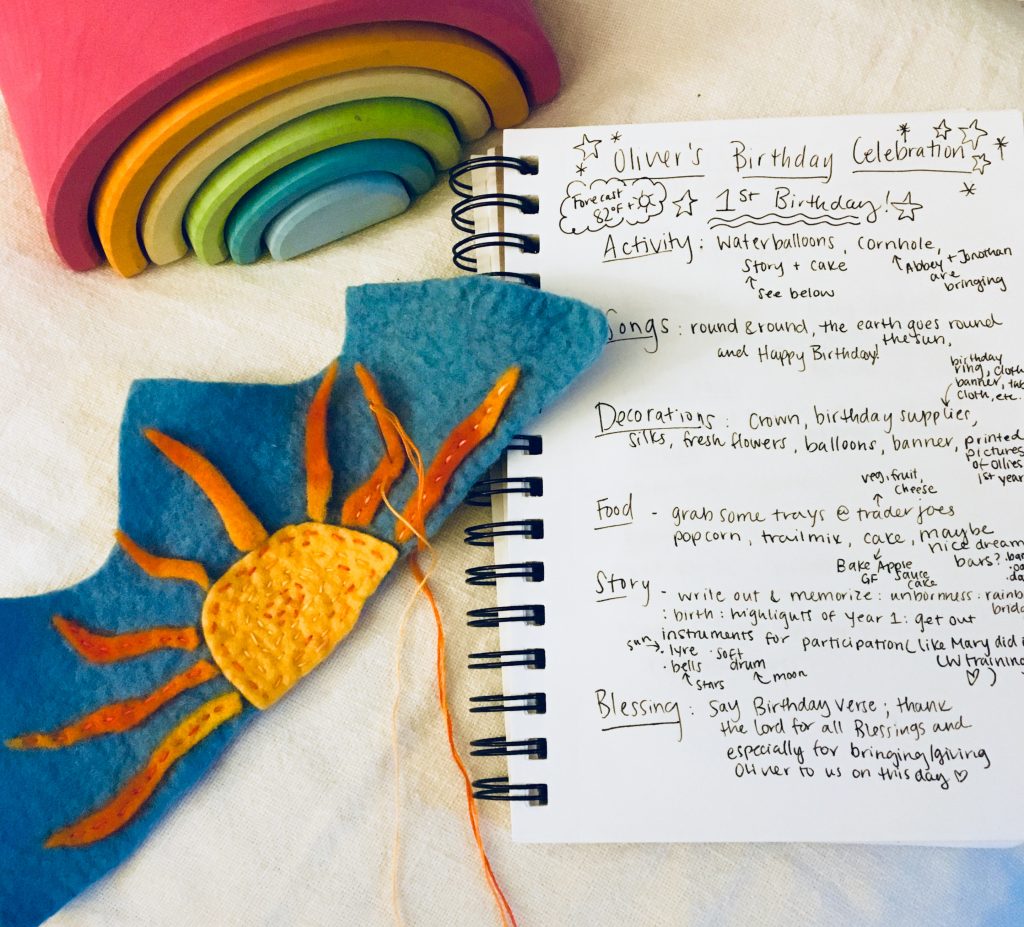May 27, 2018
Love does not dominate. It cultivates. – Johann Wolfgang von Goethe
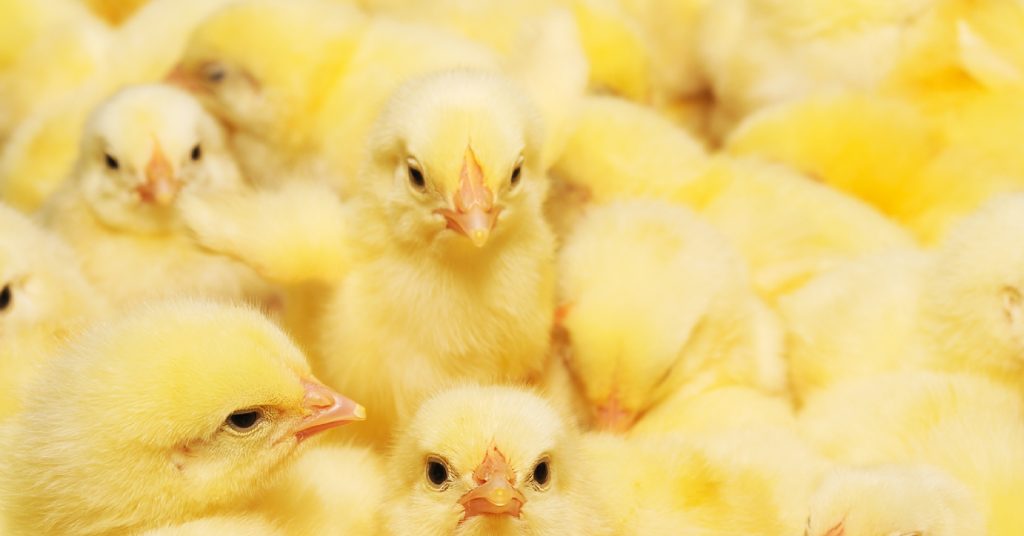
Some of you know that I run a small farm education program in Wisconsin. I’ve been thinking a lot about growing lately! The baby chicks that hatched at the beginning of May are already gawky, awkward teenagers. The tomato seedlings on my back porch for our annual tomato plant fundraiser grow taller everyday, threatening to outgrow the containers the third graders re-potted them in last week. The children who come to the farm every year from a local school hop off the bus to greet us, and it seems they have each grown a foot since last spring. Growth abounds in the spring, and reminds us how abundant life is, and how fleeting, too. Our children grow like weeds, and we can’t stop them even if we want to (and sometimes we want to!) Yet, grow they must, and so do we. What’s growing in your heart or your garden this week? Let us know in the comments below!

Mary O’Connell, Your Living Arts Weekly Blog Editor
Practical Activity
The child’s birthday offers a wonderful opportunity to celebrate his or her growth. Children’s birthday celebrations have grown to be over-the-top affairs, with rented bouncy castles, lavish gifts and high-priced entertainment. What a gift to a child of any age to have a meaningful, heartfelt birthday celebration at home. Thank you to LifeWays student, Emary Williams, for sharing some photos of her little one’s recent birthday. (The LifeWays Early Childhood Training students plan a festival as part of their training, and this was Emary’s, so the outline and specific components were her “homework.”)


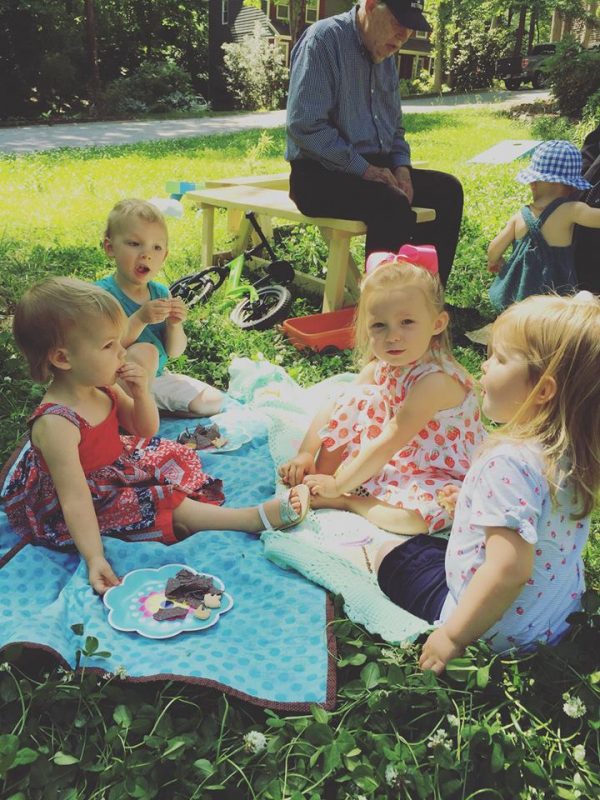

Depending on your handwork skill level, here are a few tutorials to make felt birthday crowns; the first one (a little more advanced) using the techniques of needle felting and machine sewing, the second one using simple hand or machine sewing, and finally a very simple crown made with hot glue and sticky Velcro (no sewing at all!)
Nurturing Care
from Kerry Ingram of Mothering Arts
“Mama, my knees hurt”. Oh, the familiar phrase of growing pains. Like many, we have a growth chart hanging on the wall and mark every few months (or sometimes weeks) how quickly our nearly 6-year-old son is sprouting up. I am in awe how quickly he is growing out of pants, pajamas and even his bicycle this spring. Luckily, he can still curl up in a ball and snuggle in my arms. We have found that when growing pains are bothersome we have a little home care routine that soothes his aches. First, we make sure he is drinking plenty of water, we add a pinch of Atlantic gray sea salt in the morning to help him hydrate through the day. I try to add in as many “wet” foods as I can (more brothy and less crunchy) and use good fats like mashed avocados and olive oil. I make an Epsom salt bath before bed; the magnesium really helps with aches and pains. Lastly, we found a salve recipe that we make from the Nerdy Farm Wife that has dandelion infused oils and magnesium oil to soothe those growing pains.
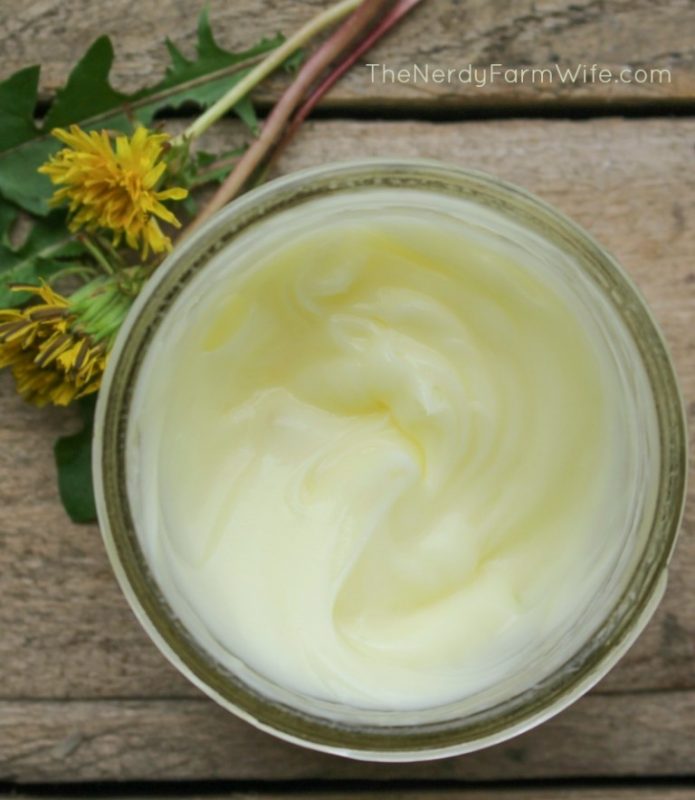
Growing is hard work! A few extra steps to nurture children can really make a big difference.
Creative Exploration
From Pamela Perkins, who has worked with and for children in various capacities since 1970. A former Waldorf teacher, LifeWays graduate and home provider, she now delights in being with her five granddaughters, plus creating magical needle-felted puppet stories and writing gentle tales to nurture young and old. She lives in the Upper Valley of Vermont, and is working on her new writing project Silver Seedlings – Nurturing Tales for the Young and Young at Heart.
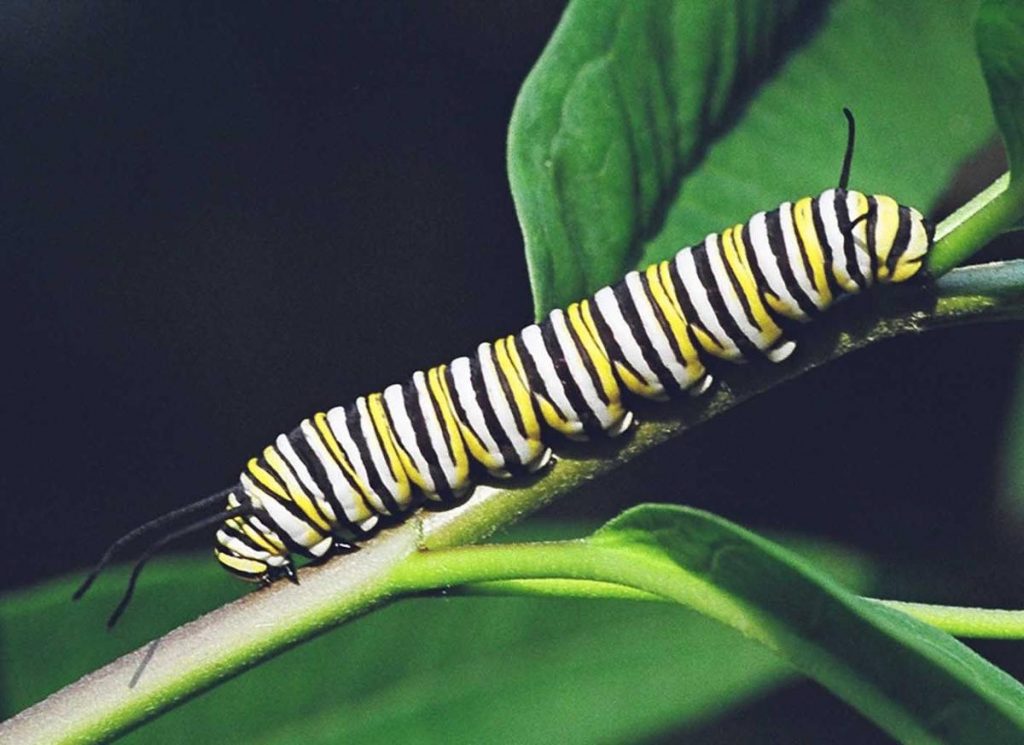
From Caterpillar to Butterfly
Caterpillar
Crawly, crawly, crawly crawl
Lots of legs both short and small
Crawly, crawly, crawly, crawl,
Over leaves both wide and tall.
Wraps up in her cozy nest
Time to sleep, to dream and rest
Wakes one morning fresh and bright
As butterfly she takes her flight.
[As a finger play: I use my 4 fingers as the ‘caterpillar’ and ‘crawl’ with a gentle tap, tap, pat, pat down along my arm to the ‘leaf’ (my hand)The caterpillar ‘crawls’ slowly to the underside of the ‘leaf’, then I gently curl the ‘leaf’ hand around the ‘caterpillar’
I softly ‘rock’ the ‘cozy nest’
Then, linking thumbs, the hands open, palms toward me, to reveal wings of butterfly.
Using a soft fluttering motion, I fly the butterfly away.
When my hands are as high as I can reach, I slowly slide one hand under the other, then in slow outward arc, I gently move my arms down and return them to my lap.
As puppet tale: I made a simple rolled caterpillar in approx. colors to be ‘correct’ for the butterfly I’ll use – generally, a Folkmanis monarch, because the movement is so fluid. The caterpillar moves slowly along the surface of my lap. I use a silk draped on my lap and up to my shoulder, or a puppet apron with a silk skirt as the ‘ground’, with a small green silk or fluff of green fleece as the ‘leaves both wide and tall’. I have the butterfly hidden underneath. I gently cup my hands over the ‘leaves’ and leave in place after the caterpillar goes under it. I pause after the word ‘Time’ which gives me time to slowly put my hands under the lap silk and slip the butterfly onto my finger. I flutter it gently and slowly in an up and down waving motion of both my hand and arm ending with it on my lap, or I slip it off and tuck in the silk draped basket that I always have next to me.]
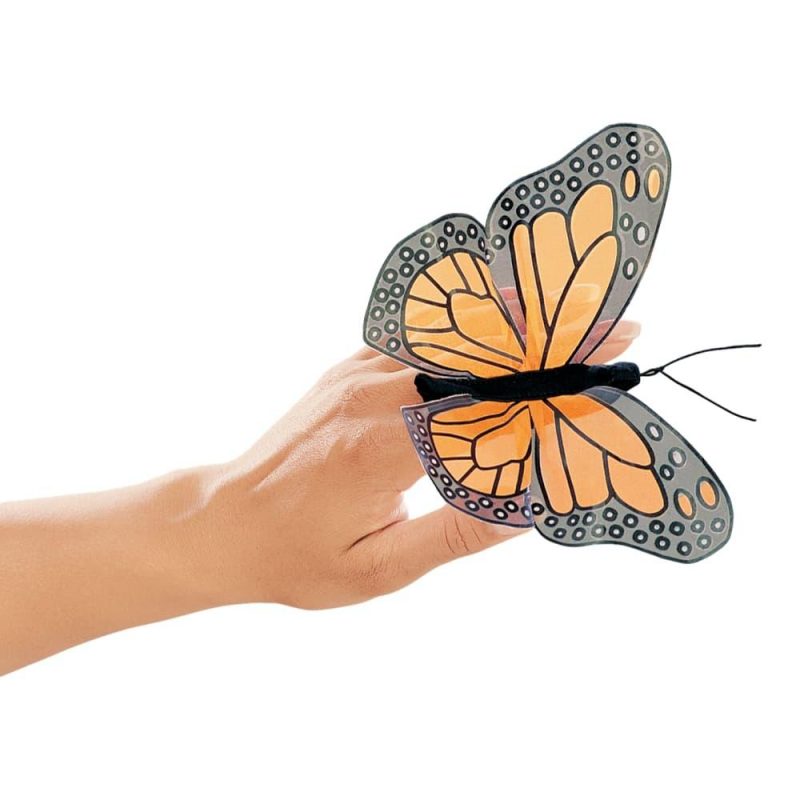
After the finger play or story, I always pause for a moment before singing the following song, a delightful caterpillar song from the old Sing thru the Seasons book (1972 ed)
Caterpillar Song
What do caterpillars do?
Nothing much but chew and chew!
What do caterpillars know?
Nothing much but how to grow.
They just eat what by and by
Will make them be a butterfly.
But that is more than I can do
However much I chew and chew…
Butterfly
[I’d pause in between each sentence, but it did create some fun active silliness as the children waited in delicious anticipation for each segment.]Little froggies leap up high with each and every bound
But butterfly wings are quiet and they never make a sound.
The kittens chase their tails, then go twirling round and round
But butterfly wings are quiet and they never make a sound.
The lambs and kids in meadows gaily skip ‘oer the ground
But butterflies wings are quiet and they never make a sound.
[Try this with American Sign Language for “butterfly” — so beautiful. Watch here!]Social Awareness
Reflective meditations help us honor special moments in the parent-child relationship. Here are two reflections for parents to savor at key times in our parenting journey, after birth and when the grown child leaves home (from Meditations for the Passages and Celebrations of Life: A Book of Vigils, by Noela Evans.)

I celebrate and welcome the new life that has come into mine:
One of the lessons you will need to learn is about sharing — and I need to learn this lesson, too.
There are those around us who are entitled to be involved as you grow and change, and I need to feel secure enough to share you with them.
My role in your world is distinct and irreplaceable, and remembering that can make my sharing easier.
I love you. I believe in you. I wish only the best for you.

My child, you leave my home but not my heart.
I will miss those parts of your life that have overlapped mine — your activities, your friends, the lights left on, the music from your room.
I have wished so often for moments of peace and quiet.
Now I wish for graceful adjustment to the stillness you leave behind.
Your years in my care have blessed me as I have watched the unfolding of your life. It is with pride and tenderness that I now release that life to follow its own promise. I love you. I believe in you. I wish only the best for you.
Discovering the Joy in Parenting
by Cindy Brooks and Joya Birns
Available on the LifeWays website!
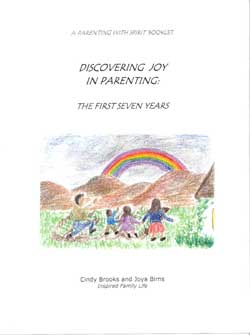
In addition to detailing ways to use rhythm, ritual and reverence to foster joy in family life, the second half of the book is filled with practical suggestions of ways to “untangle knots between parent and child” and make repairs when situations have deteriorated. It is one of the few books to address ways to effectively respond to tantrums if they occur. The authors’ many suggestions on nurturing yourself are realistic and practical and can help parents and teachers stay on an even keel—as well as regain their bearings when they are off.
